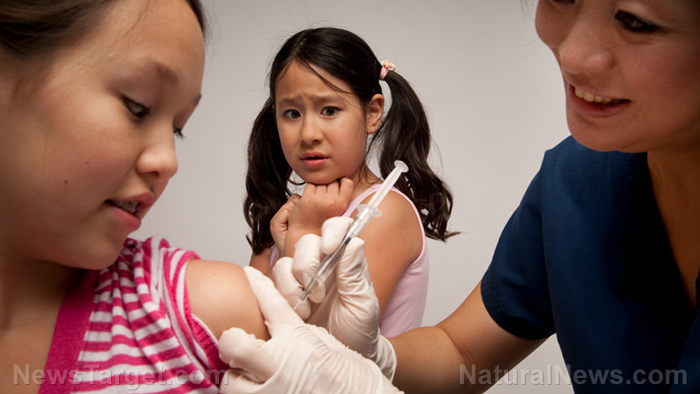Watch what you eat: 5 Tips to help reduce your toxic plastic exposure in food and water
06/17/2020 / By Zoey Sky

The National Library of Medicine defines microplastics as pieces of plastic smaller than 5 mm in size. Microplastics can be found in oceans, ocean seabeds, coastal waters, shorelines and the surface of the sea. They can even be found in food and water.
To limit your exposure to microplastics, take measures such as filtering the water you drink every day.
What are microplastic and how do they form?
Microplastics can be found in items like skincare products, synthetic clothing fabric and toothpaste. Additionally, microplastics are formed when larger pieces of plastic break apart into minuscule beads.
Because microplastics aren’t removed by wastewater treatment after they’ve been washed down the drain, they eventually create problems in the environment. This is why scientists continue to find microplastics throughout the ocean and in marine life.
Why do you need to avoid microplastics?
Microplastics absorb and release chemicals and harmful pollutants. Ingredients or toxic chemicals absorbed by plastics can also build up and pollute the environment.
Studies are ongoing to determine if humans can also be exposed to these pollutants by consuming contaminated seafood. (Related: Why are tiny microplastics such a big deal? Understanding the harmful side effects of exposure, ingestion.)
Past research suggests that plastics in the body may have the following negative effects:
- Acting as carcinogens.
- Causing developmental delays in children.
- Causing hearing loss.
- Causing obesity.
- Damaging organs.
- Disrupting hormones.
- Harming reproductive health.
- Impairing your immune system.
A lot of plastic products often contain known toxins like bisphenol A (BPA), phthalates and styrene. While the American Academy of Pediatrics and the American Chemistry Council urge for the close regulation of these chemicals, they are still widely used to make different plastic products.
How can you avoid microplastics?
Follow the tips below to protect yourself and your loved ones from microplastic exposure.
- Bottled water products contain twice the amount of microplastics, so only drink from a water source that’s been put through a high-quality water purification system. Water filtration will help eliminate harmful fluoride and other chemicals found in most municipal water supplies. Use carbon block water filters and biodegradable coconut shell-based carbon block filters to remove microplastics in the water you drink.
- Eat fresh meat and organic fruits and vegetables. Purchase organically grown food, which are less likely to contain a lot of microplastics.
- Only buy sea salt from trusted sources since some products may contain microplastics.
- When heating food, don’t heat your food in plastic containers. Use glass containers instead or simmer on the stove using quality cookware, like a ceramic pot or a cast-iron skillet.
- Use less plastic, particularly single-use plastic items like plastic bags and plastic wrap. Use paper bags instead of plastic bags.
- If you need to buy plastic products, avoid items with recycling codes 3, 6 and 7. Products with these codes are made with phthalates, styrene and BPAs, respectively.
- Recycle plastic items that can be reused and repurposed. This helps prevent the production of more microplastics that will pollute the environment.
- Don’t throw plastic items in lakes, rivers, oceans or other bodies of water.
- Vacuum regularly to prevent the buildup of microplastic-containing dust inside your home or office.
- Microbeads are also added to certain health and beauty products, like toothpaste and facial scrub. Avoid products with microbeads to discourage manufacturers from using them.
- Buy clothes made with non-synthetic clothing fibers, which can significantly contribute to microplastics pollution. Instead, wear clothes made of natural fibers like cotton.
Be mindful of the plastic waste you produce, filter the water you drink and consume more organic produce to limit your exposure to microplastics, which can negatively affect the environment and your health.
Sources include:
Submit a correction >>
Tagged Under:
BPA, BPA-free, Cosmetics, environment, marine life, microplastics, nanoplastics, Oceans, plastics, products, research, toxins
This article may contain statements that reflect the opinion of the author



















